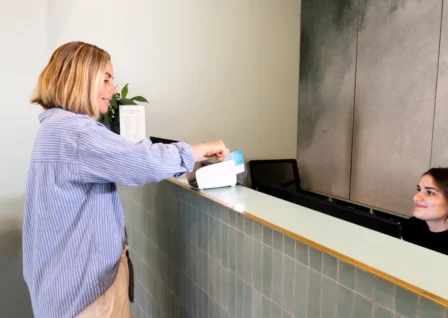No more card surcharges? How Australian healthcare providers can prepare

16 April 2025 - 5 min read
Business Strategies

A strategic guide for aged care software developers and providers ahead of November 2025.
Written by Pete Williams, CTO Tyro Health at Tyro Payments
The transition to the Support at Home program represents more than just a policy shift—it fundamentally changes how aged care finances are managed in Australia. One of the most significant changes involves care recipient contributions. The responsibility for calculating, collecting, and managing these individual payments now shifts onto service providers.
This transition presents both operational hurdles—particularly around administrative complexity—and opportunities to enhance financial processes and the overall care recipient experience.
For software developers building the next generation of aged care solutions and providers delivering essential services, understanding and preparing for this change is critical.
At the heart of this transition lie the detailed Support at Home business rules, which outline a new contribution structure that providers must navigate.
For providers managing multiple care recipients, automation is critical.
To tackle this challenge effectively, providers and their software partners should focus on three core operational pillars:
Accurate calculation
This is the foundation. Systems must reliably apply the correct contribution percentages based on verified care recipient status and Services Australia’s acknowledgment of claim approval. They need to support varying rates across service categories, adjust seamlessly following official notifications, and account for carried-over funds and pooled budget allocations.
Efficient collection
Streamlined collection processes are essential for operational efficiency and maintaining positive cash flow. This means supporting a range of payment methods preferred by care recipients—such as debit and credit cards (including secure “card on file” setups), direct debits (with processes to manage dishonours and account changes), and emerging options like PayTo (with mandate updates). Just as crucial are flexible channels for recipients to provide or update their payment details securely—whether via online portals, secure SMS or email links, telephone support, or traditional paper forms.
Robust reconciliation and reporting
Transparency and accuracy are non-negotiable. Systems must be capable of meticulously reconciling collected contributions against government subsidies. They must generate clear, easy-to-understand statements for care recipients, along with detailed internal tracking, accurate remittance advice, and audit-ready financial reports.
Beyond back-end systems, the care recipient’s payment experience is paramount. A confusing, insecure, or rigid process can erode trust and create distress. Getting it right means designing for several critical touchpoints:
Secure payment setup
The initial setup must be simple and reassuring. Care recipients need clear, secure ways to provide their payment details, select their preferred method (e.g. card, direct debit), and set frequency preferences if applicable. They should receive confirmation that their data is stored safely and understand the protections in place.
Clear payment notifications
Transparency builds trust. Recipients should receive advance notice of upcoming payments, with clearly itemised services and applicable rates. Providing opportunities to review charges, using plain language for calculations, and showing budget utilisation and progress toward their contribution cap all help foster confidence.
Flexible payment authorisation options
Choice empowers. While automatic processing adds convenience, some recipients may prefer to authorise each payment. Offering flexible options—such as auto-pay for smaller amounts and consent for larger charges—alongside clear opt-out mechanisms, straightforward terms, and the ability to nominate a next of kin or financial delegate, ensures individual preferences are respected.
Timely payment confirmation
Post-payment communication closes the loop. Instant receipts—delivered via the recipient’s preferred channel (email, SMS, portal, or mail)—should confirm payment, list services, show progress toward the contribution cap, and provide details of the next scheduled payment.
Accessible payment issue resolution
When things go wrong, prompt and supportive communication is essential. Recipients should receive immediate notifications of failed payments, with clear explanations (e.g. expired card, insufficient funds), simple ways to update details, and clear retry schedules. Support should be easy to access—whether by phone, email, or online portal.
The complexities are significant—but so is the opportunity. In Part 2, we’ll focus on the essential systems and strategies that will enable aged care providers and software developers to design flexible, compliant, and user-friendly payment solutions.
To help providers navigate this transition, Tyro Health will seamlessly integrate with this new framework, enabling aged care providers to process Support at Home claims and manage participant contribution payments with ease. If you’re an aged care service provider or software developer interested in learning more about our integrated solution, please register your interest here.
Disclaimers
Tyro Health provides this article for general information and educational purposes and does not take into account the financial situation or need of any reader. The information provided must not be relied upon as legal, tax or financial advice.
You may also like
No more card surcharges? How Australian healthcare providers can prepare

Beyond Direct Debit in Aged Care: Card on File, PayTo and More

Beyond Direct Debit: Rethinking Payment Collection for Support at Home

Navigating Support from Home – Building an Effective Solution: Requirements for Software and Systems
